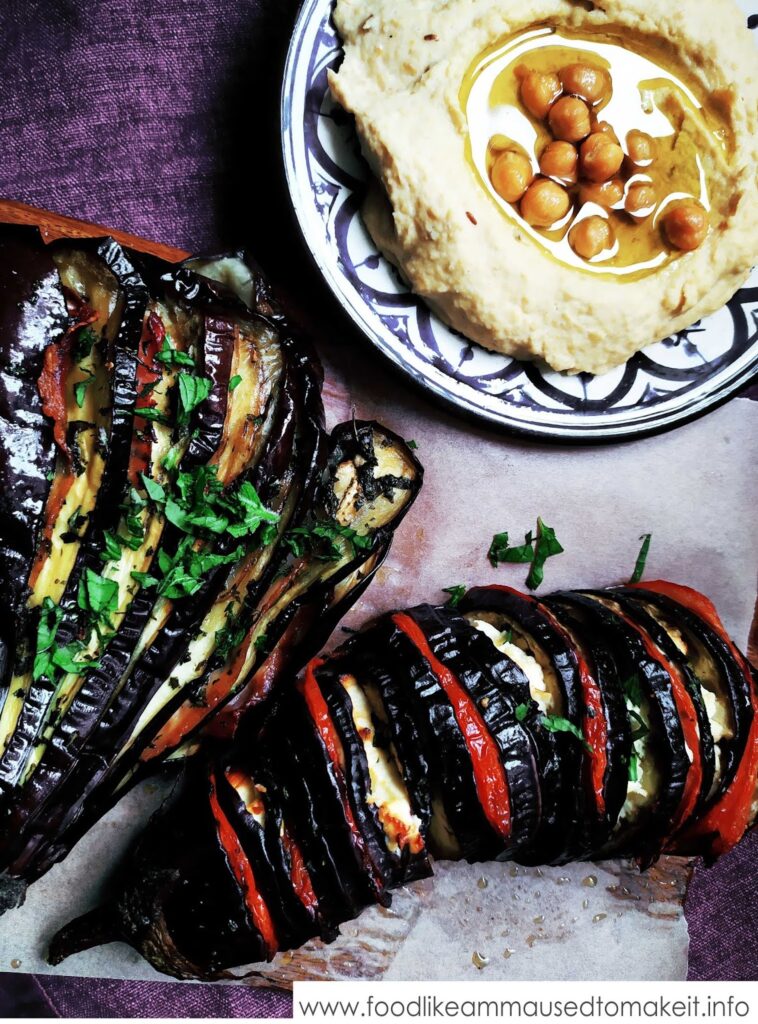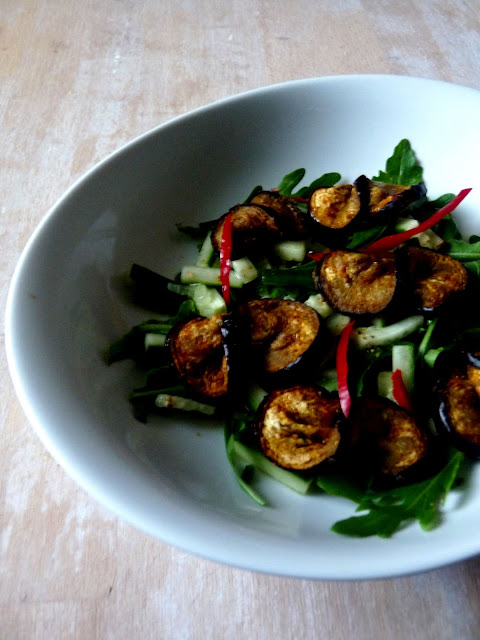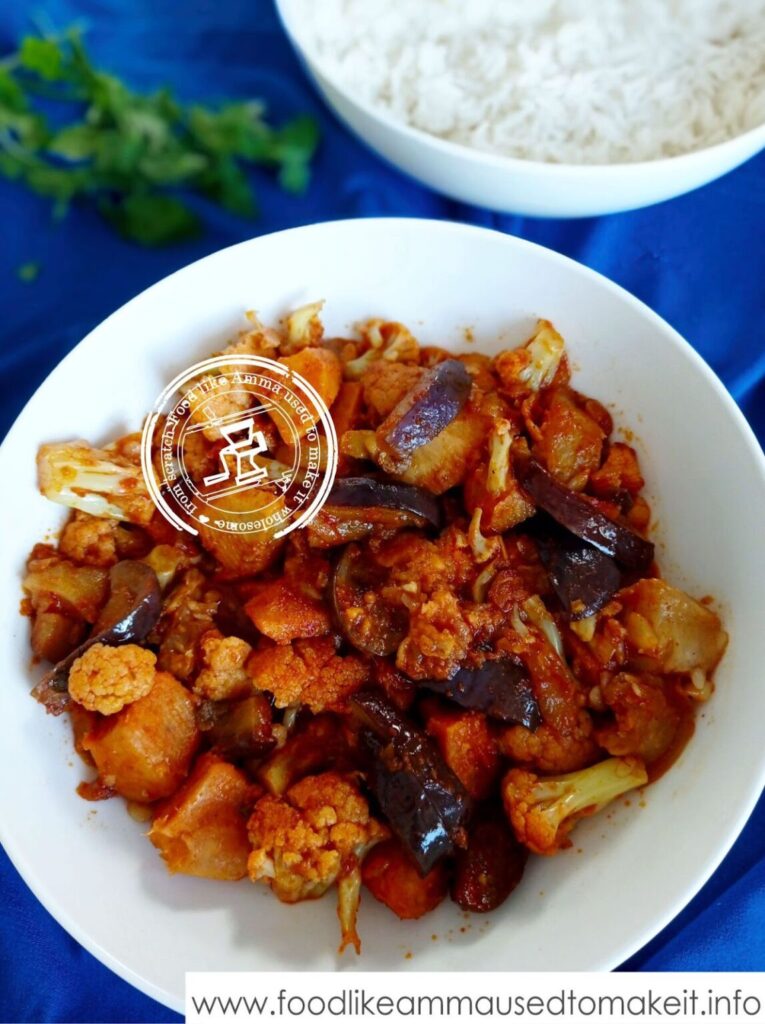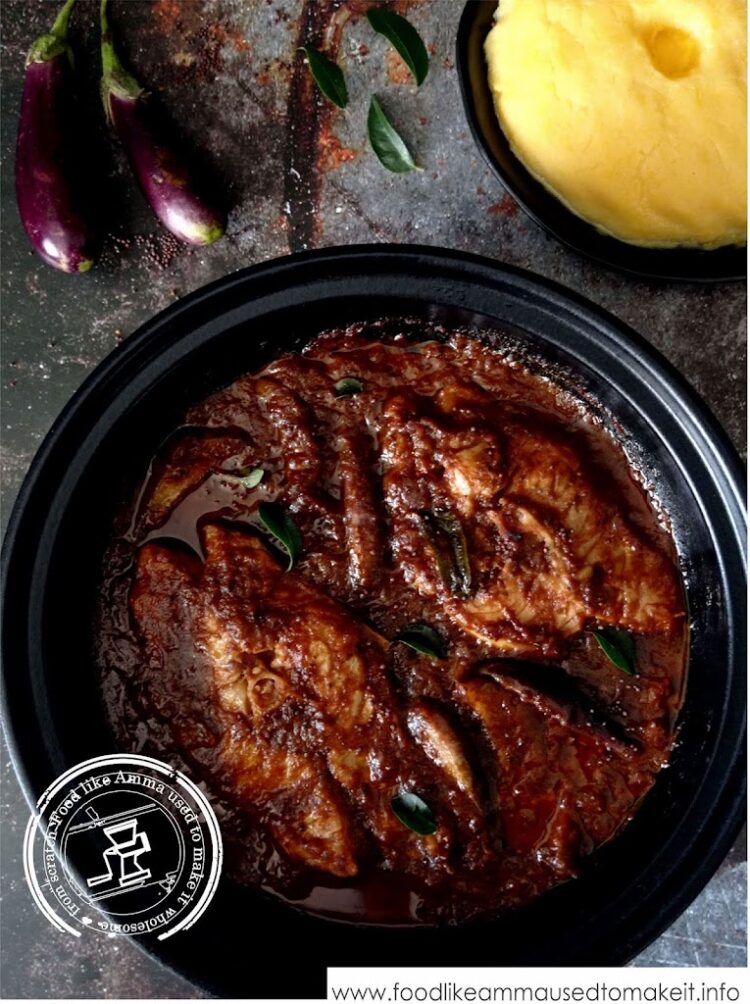Eggplant, also known as aubergine in British English or brinjal in South and Southeast Asia derived from the Portuguese word “berinjela,” which was introduced to these regions during the colonial period. It was a staple in my childhood during the 1980s when it was commonly used to make brinjal curry. It is one of the most versatile vegetables in the culinary world, known for its rich, slightly bitter flavour, tender texture, and its incredible ability to absorb flavours.
Brinjal curry holds a deeply nostalgic place in my heart, being the first curry I ever cooked and still my favourite vegetable curry. As children, my younger sister and I would eagerly gather vegetable peels while Amma prepared meals. We’d turn these scraps into our little curries, using what we called “flat spoons”—small, metal spoons that resembled tiny frying pans, though they looked more like Chinese soup spoons, only made of metal rather than porcelain. We would mimic Amma’s cooking, placing our flat spoons on the coal stove, and pretending to cook alongside her.
Various Methods to Prepare Eggplant Curry
What I loved most was Amma’s Brinjal Curry, a simple yet special recipe that featured boiled eggs—a response, I believe, to my father’s frequent complaints about eating vegetable curries. Amma’s recipe was straightforward, consisting of just brinjal, onion, chilli powder, salt, and water. it must have been the love she infused into the dish that made it taste so wonderful. Brinjal was harvested from Amma’s garden. Pictured below are my homegrown eggplants used to make this recipe.
Eggplant curry typically involves cooking eggplant in a rich, spiced tomato-based sauce, often with ingredients like onions, garlic, ginger, and a blend of fragrant spices such as cumin, coriander, turmeric, and garam masala. The eggplant absorbs the spices beautifully, becoming tender and infused with flavor as it cooks down in the curry sauce.
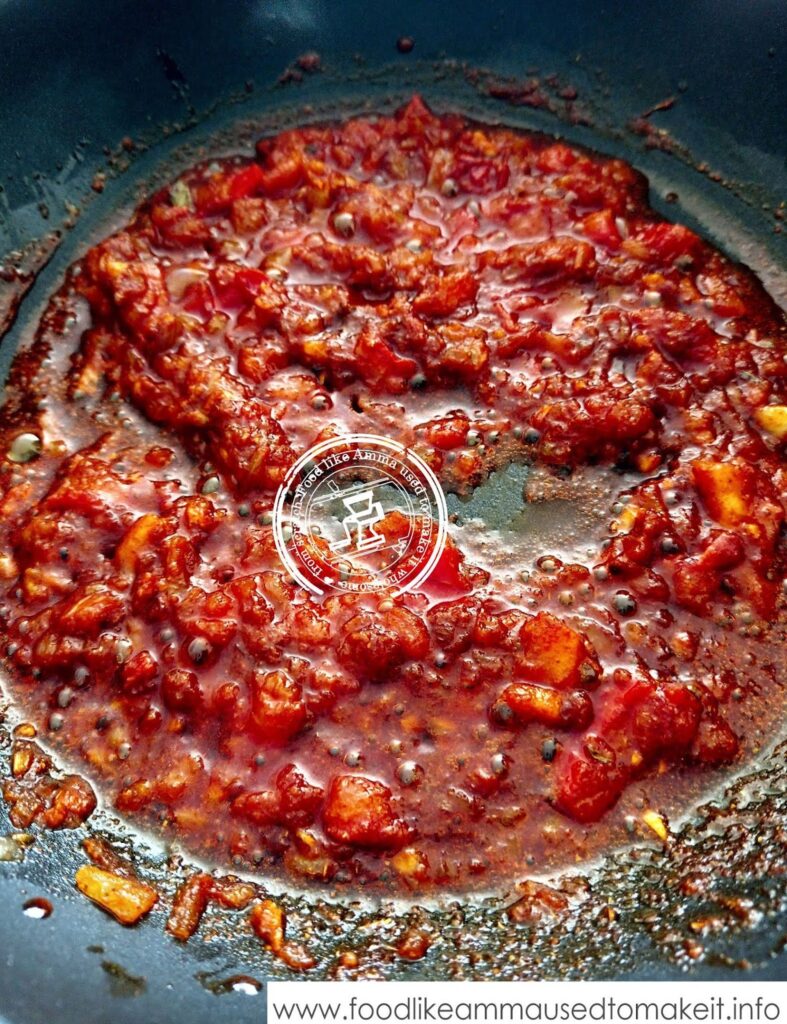
Depending on the regional variation, aubergine curry can be either dry or saucy. Some versions include coconut milk for a creamy texture, while others focus on a more tangy, tomato base. This dish is often served with rice or flatbread, like naan or roti, making it a satisfying vegetarian option that’s packed with flavour and nutrition.
Table of Contents
Eggplant Curry Recipe
How to Cook Eggplant Curry Step by Step
Amma most often used the long slender Brinjal which she would pick from the back garden. To make Brinjal curry like Amma used to, you will need one aubergine, 1 tablespoon oil, 1 tablespoon chilli powder or masala, salt, one cup of water. (You can vary these quantities depending on how much you would like to cook or increase the spice content if you prefer the dish to be more pungent.
Next step heat your pan, add the oil then onions and fry until the onions start to brown and soften. I prefer large slices of onion for brinjal curry so I have sliced the onion instead of chopping it. Add curry powder. Let this mixture braise for a few minutes, careful not to burn the chilli powder.

Add brinjal then add salt and a cup of water to let the brinjal cook.
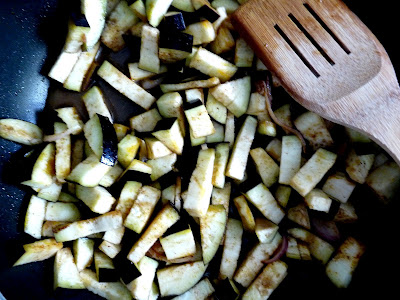
Once the water evaporates, you can lower the heat letting the aubergine dry out. Add shelled boiled eggs into the pan and mix with the Aubergine. Be careful not to break the egg. Cut the eggs in half or serve whole…this is a personal preference. Serve Brinjal and egg curry with rice or roti.
More about Brinjal:
Scrumptious Eggplant Recipes To Try Next
